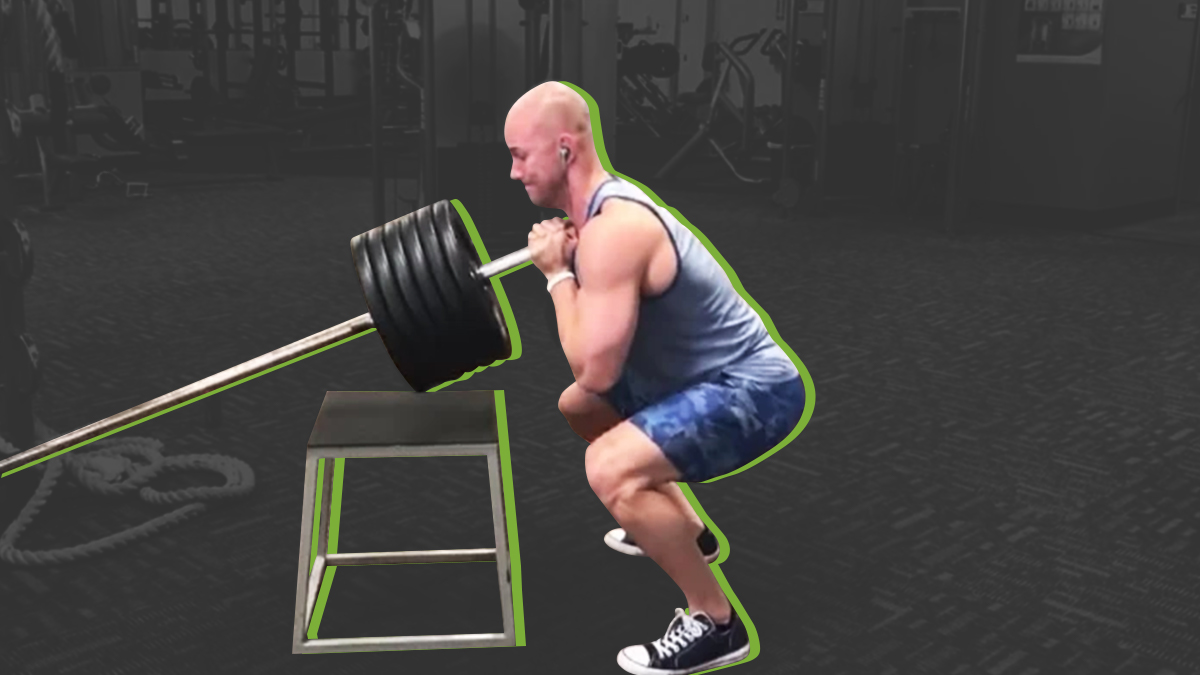What are Barbell Landmine Exercises?
Barbell landmine exercises are a dynamic and adaptable strength training method that utilizes a barbell and a landmine attachment. This innovative setup allows for a wide range of movements, targeting various muscle groups and providing unique benefits compared to traditional weightlifting exercises. The versatility of barbell landmine exercises makes them an excellent addition to any strength training program, whether you’re a beginner or an experienced weightlifter.
The Anatomy of a Landmine: Understanding the Equipment
A barbell landmine attachment is a simple yet effective piece of equipment that consists of a metal sleeve, typically made of steel or heavy-duty plastic, designed to hold one end of a barbell. The other end of the barbell is left free, allowing for a wide range of movements and exercises. To set up a barbell landmine correctly and safely, follow these steps:
- Choose a barbell: Select a standard Olympic barbell or a shorter barbell, depending on your available space and the exercises you plan to perform.
- Insert the barbell into the landmine attachment: Ensure the sleeve of the barbell is securely fastened into the landmine’s opening. Some landmine attachments may require you to slide the barbell into a corner or secure it to the floor using sandbags or weights for added stability.
- Add weights to the free end of the barbell: Load weight plates onto the free end of the barbell, using a collar to secure them in place. Be cautious when adding or removing weights, as the barbell may be off-balance due to the landmine attachment.
- Familiarize yourself with the equipment: Before performing any exercises, practice setting up and breaking down the landmine attachment. This will help you become more comfortable with the equipment and ensure a smooth and efficient workout experience.
By understanding the basic components of a barbell landmine attachment and following proper setup procedures, you can maximize safety, performance, and the effectiveness of your landmine exercises.
Unleashing the Power: Mastering Barbell Landmine Exercise Techniques
Barbell landmine exercises offer a diverse range of movements that can effectively target various muscle groups. Here is an overview of essential barbell landmine exercises and their proper execution:
Landmine Squat
The landmine squat is a compound exercise that primarily works the quadriceps, hamstrings, and glutes. To perform a landmine squat, stand with your feet hip-width apart, holding the barbell with both hands at shoulder height. Keeping your back straight, lower your body into a squat position, ensuring your knees do not extend beyond your toes. Pause briefly at the bottom, then push through your heels to return to the starting position.
Landmine Deadlift
The landmine deadlift targets the hamstrings, glutes, and lower back. Stand with your feet shoulder-width apart, holding the barbell with both hands against your thighs. Keeping your back straight, hinge at the hips and lower the barbell towards the floor, ensuring your knees are slightly bent. Drive through your heels to return to the starting position, keeping the barbell close to your body throughout the movement.
Landmine Row
The landmine row is a compound exercise that primarily targets the upper back and biceps. Stand with your feet shoulder-width apart, holding the barbell with one hand at hip level. Keeping your back straight, pull the barbell towards your body, squeezing your shoulder blades together. Pause briefly at the top, then lower the barbell back to the starting position, maintaining control throughout the movement.
Landmine Press
The landmine press is a versatile exercise that can be performed as a push press, a half-kneeling press, or a standing press. Each variation targets the shoulders, chest, and triceps differently. To perform a push press, stand with your feet shoulder-width apart, holding the barbell at chest height. Bend your knees slightly, then explosively push through your legs and drive the barbell above your head. Lower the barbell back to the starting position, maintaining control throughout the movement.
Mastering these essential barbell landmine exercises will help you unlock the full potential of this innovative strength training method, allowing you to build strength, improve balance, and enhance overall fitness.
Maximizing Results: Integrating Landmine Exercises into Your Workout Routine
To fully harness the potential of barbell landmine exercises, it’s essential to incorporate them effectively into your strength training program. Consider the following factors when integrating landmine exercises:
Frequency
Depending on your fitness level and goals, you can include barbell landmine exercises in your routine one to three times per week. Alternate between different exercises to ensure a balanced workout and prevent overtraining specific muscle groups.
Volume
Volume refers to the total amount of work performed during a workout, often measured in sets and repetitions. For landmine exercises, aim for 2-4 sets of 8-12 repetitions per exercise. Adjust the volume based on your fitness level and goals, increasing or decreasing as needed.
Intensity
Intensity refers to the weight or resistance used during an exercise. To determine the appropriate intensity for landmine exercises, choose a weight that allows you to complete the desired number of repetitions with proper form. Gradually increase the weight as your strength improves.
Program Design
Designing a well-rounded strength training program that incorporates barbell landmine exercises, as well as other exercises and movements, is crucial for achieving optimal results. Consider combining landmine exercises with traditional weightlifting exercises, bodyweight movements, and cardiovascular activities to create a comprehensive and balanced workout routine.
By carefully considering frequency, volume, and intensity, and integrating barbell landmine exercises into a well-designed strength training program, you can maximize the benefits of these innovative movements and reach your fitness goals more effectively.
How to: Perform a Barbell Landmine Exercise Safely and Effectively
To get the most out of barbell landmine exercises, it’s essential to follow proper setup, form, and execution guidelines. Here’s a step-by-step guide for performing a barbell landmine exercise, using the landmine squat as an example:
Step 1: Setting Up the Landmine
Place one end of a barbell securely into a landmine attachment or wedge it into a corner. Load the desired weight onto the opposite end of the barbell.
Step 2: Assuming the Starting Position
Stand with your feet hip-width apart, holding the barbell with both hands at shoulder height. Keep your back straight and engage your core.
Step 3: Executing the Movement
Lower your body into a squat position, ensuring your knees do not extend beyond your toes. Pause briefly at the bottom, then push through your heels to return to the starting position. Maintain control throughout the movement, avoiding excessive momentum or jerky movements.
Step 4: Common Mistakes to Avoid
Avoid rounding your back, allowing your knees to cave inward, or lifting your heels off the ground during the exercise. Ensure that the weight is evenly distributed and that you maintain proper form throughout the movement.
By following these steps and focusing on proper form, you can perform barbell landmine exercises safely and effectively, maximizing their benefits and minimizing the risk of injury.
Customizing Your Workout: Variations and Progressions of Barbell Landmine Exercises
Barbell landmine exercises offer a wide range of variations and progressions, allowing you to customize your workout and cater to different fitness levels and goals. Here are a few examples:
Landmine Squat Variations
For beginners, performing a landmine squat with both hands on the barbell can help build stability and confidence. As you progress, you can transition to a single-arm landmine squat, which challenges your core stability and balance. Advanced lifters can attempt a landmine goblet squat, holding the barbell vertically with both hands at chest level, further increasing the demand on the core and lower body muscles.
Landmine Deadlift Variations
The landmine deadlift can be performed with a sumo stance, where your feet are wider than shoulder-width apart, or a conventional stance, with your feet hip-width apart. Additionally, you can perform a landmine Romanian deadlift, which targets the hamstrings more specifically, or a landmine straight-leg deadlift, focusing on the lower back and glutes.
Landmine Row Variations
The landmine row can be performed with one or two hands, depending on your fitness level and goals. For a greater challenge, you can try a landmine inverted row, where you suspend your body from a Smith machine or a sturdy bar, pulling the barbell towards your chest. This variation targets the upper back and biceps while engaging the core and lower body muscles for stability.
Landmine Press Variations
The landmine press can be performed in a half-kneeling position, which emphasizes core stability and balance. You can also try a landmine floor press, where you lower the barbell to the ground between repetitions, further engaging the chest and triceps muscles. Advanced lifters can attempt a landmine push press, incorporating a leg drive for increased power and explosiveness.
By exploring these variations and progressions, you can continually challenge your body and customize your barbell landmine exercises to meet your unique fitness goals and needs.
The Science Behind Landmine Exercises: Muscle Activation and Biomechanics
Barbell landmine exercises offer unique benefits in terms of muscle activation and biomechanics, making them an attractive alternative to traditional weightlifting exercises. By understanding the science behind these movements, you can better appreciate their value and incorporate them effectively into your strength training routine.
Muscle Activation
Landmine exercises engage multiple muscle groups simultaneously, promoting functional strength and stability. For example, the landmine squat activates the quadriceps, hamstrings, glutes, and core muscles, while the landmine press targets the chest, shoulders, triceps, and core. This comprehensive muscle activation not only builds strength but also improves overall movement quality and balance.
Biomechanics
The unique biomechanics of barbell landmine exercises provide several advantages over traditional weightlifting exercises. The angled bar path of landmine movements reduces stress on the joints, particularly the shoulders and wrists, making them more accessible for individuals with limited mobility or previous injuries. Additionally, landmine exercises often involve a greater range of motion, which can enhance flexibility and mobility over time.
Benefits Compared to Traditional Weightlifting Exercises
Barbell landmine exercises offer several benefits compared to traditional weightlifting exercises. They provide a safer alternative for individuals with joint issues or limited mobility, as the angled bar path reduces stress on vulnerable areas. Furthermore, landmine exercises promote functional strength and stability, engaging multiple muscle groups and improving overall movement quality. Lastly, the versatility of landmine exercises allows for a wide range of variations and progressions, catering to different fitness levels and goals.
By incorporating barbell landmine exercises into your strength training routine, you can take advantage of their unique muscle activation patterns and biomechanical advantages, enhancing your overall fitness and performance.
Landmine Exercises vs. Traditional Weightlifting: A Comparative Analysis
Barbell landmine exercises and traditional weightlifting exercises each have their unique advantages and disadvantages. Understanding these differences can help you determine when to incorporate landmine exercises into your strength training routine and how they can complement traditional weightlifting exercises.
Similarities
Both barbell landmine exercises and traditional weightlifting exercises aim to build strength, improve muscle mass, and enhance overall fitness. They both involve the use of barbells and various exercises that target specific muscle groups. In this sense, they share common goals and can be used interchangeably in a well-designed strength training program.
Differences
The primary difference between landmine exercises and traditional weightlifting exercises lies in their biomechanics and movement patterns. Landmine exercises often involve an angled bar path, which can reduce stress on the joints, particularly the shoulders and wrists. This makes them more accessible for individuals with limited mobility or previous injuries. In contrast, traditional weightlifting exercises typically involve straight bar paths and may place greater stress on the joints.
Additionally, landmine exercises often promote functional strength and stability, engaging multiple muscle groups and improving overall movement quality. Traditional weightlifting exercises, while still effective for building strength, may isolate specific muscle groups more frequently, potentially limiting their functional carryover to everyday activities.
Complementary Approaches
Barbell landmine exercises and traditional weightlifting exercises can be used together in a complementary manner. Landmine exercises can serve as alternatives or supplements to traditional weightlifting exercises, providing variety and reducing the risk of overuse injuries. Incorporating both methods into your strength training program can help you achieve a balanced and well-rounded fitness regimen.
By understanding the similarities and differences between barbell landmine exercises and traditional weightlifting exercises, you can make informed decisions about how to best incorporate them into your strength training routine, maximizing their unique benefits and optimizing your overall fitness and performance.







